In 2019, wet weather during the growing season favored the development of numerous corn diseases including Physoderma brown spot, bacterial leaf streak, stalk rot diseases, and ear rot diseases. This update highlights these diseases, the environmental factors that favor their development, and their management. In addition, this update also introduces the disease tar spot that is expected to develop in Nebraska in 2020.
Physoderma Brown Spot
Physoderma brown spot is caused by the fungus Physoderma maydis. The fungus produces zoospores that swim in water and infect the plant causing lesions when light is available. Lesions may develop on the leaves in bands across the leaf or cover entire leaves. Lesions on the leaf blade may be very small (1/4”) and yellow, tan, brown or orange in color. In the leaf midrib, lesions may be somewhat larger and dark purple to black in color (Figures 1-3). Lesions may also develop elsewhere on the plant, especially the stalk and leaf sheaths.
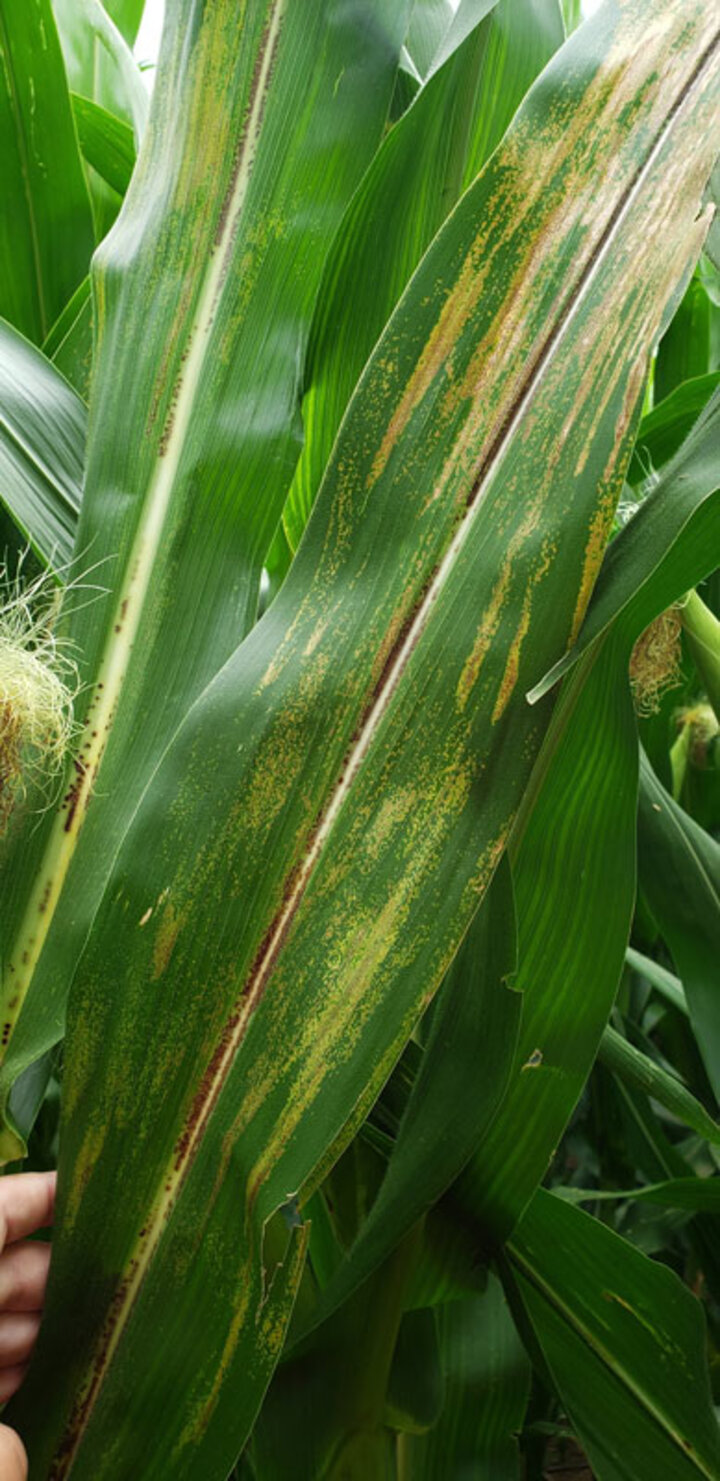
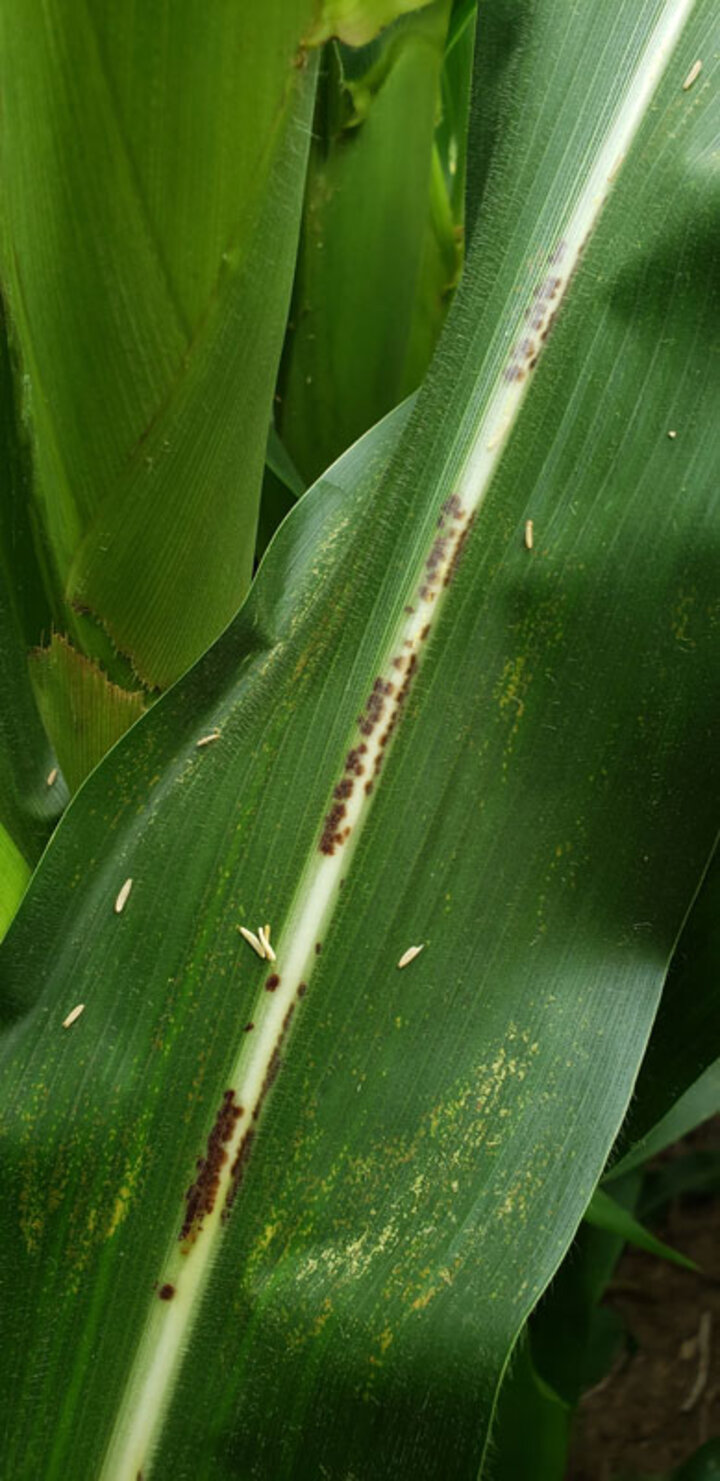

The disease can sometimes also lead to higher incidence of stalk lodging. Spores may infect stalk rinds, especially around one or more of the lowest aboveground nodes causing decay and weakening them. These brittle stalks are more prone to break and lodge (Figures 4-5). The increased incidence of brittle stalks does not necessarily occur in fields with severe foliar disease. Severe foliar disease and brittle stalks are likely associated with certain susceptible hybrids. Monitor stalk strength in fields with Physoderma brown spot to anticipate whether lodging will be a problem at harvest.
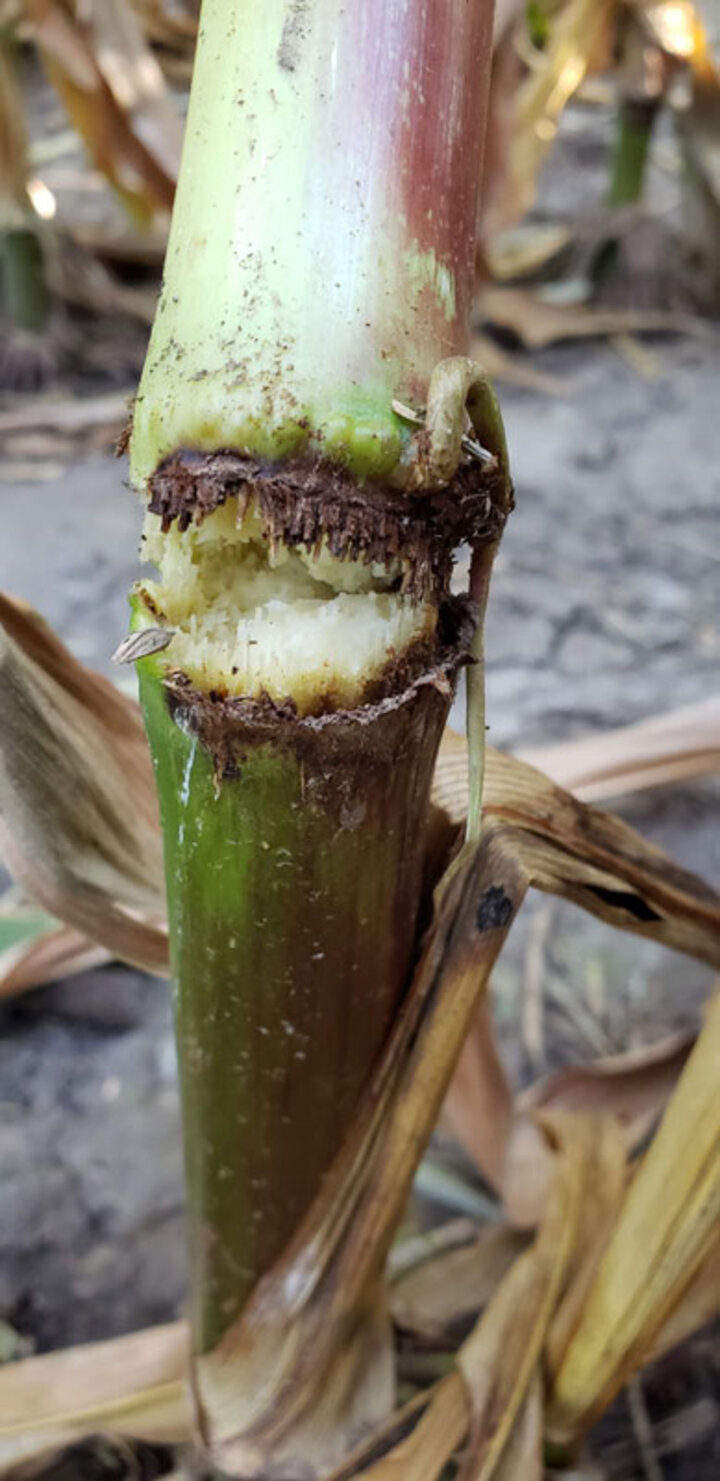

Wet conditions during moderate to warm temperatures are favorable for disease, especially 73-86 F, which are optimal. Management of the disease in foliar fungicide trials has not been successful to this point, which may be due, in part, to the difficult nature of working with this pathogen. Survival of the fungus is in infested crop debris from the previous year(s), so crop rotation or tillage, where practical, may help to reduce future disease pressure by reducing overwintering inoculum. Since differences in disease severity among corn hybrids have been observed, producers with affected fields should work closely with seed company agronomists to identify the most appropriate hybrids.
For more information:
Bacterial Leaf Streak
Bacterial leaf streak developed in many areas of Nebraska again in 2019 and has been confirmed in 74 Nebraska counties (Figure 6). Most recently in 2018, the pathogen (Xanthomonas vasicola pv. vasculorum) was confirmed in five of the Panhandle counties. In 2019, the disease appeared to be more severe in these areas as noted by Dr. Bob Harveson in the Specialty Crops Disease Update in these 2020 Crop Production Clinic Proceedings.
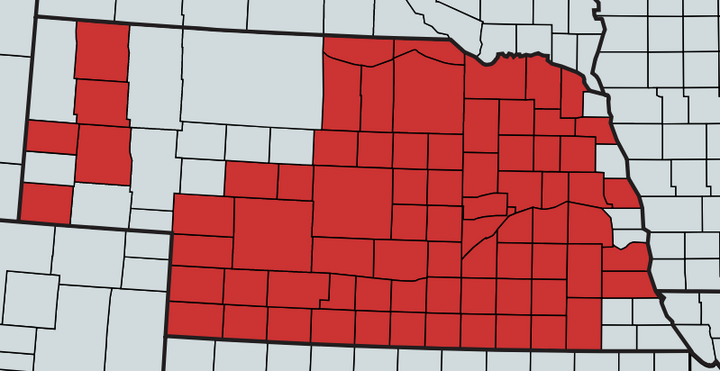
Symptoms of bacterial leaf streak are interveinal and yellow to brown color. When backlit the yellow discoloration may appear more obvious and is commonly associated with the disease. (Figures 7-9). If you need help identifying a disease or think you may have found bacterial leaf streak in a county where it hasn’t been reported, please notify us and submit a sample to the UNL Plant and Pest Diagnostic Clinic at http://go.unl.edu/plantclinic. Bactericides have not provided control of the disease in field experiments. Hybrid resistance to the disease has not been identified, but bacterial leaf streak severity can vary by hybrid so hybrid selection may be important to reduce disease severity. Crop rotation may be of limited value since at least 12 other plant species have been identified as alternative hosts (Table 1).
| Annual Cereal Crops | Perennial Pasture, Turf, and Landscape Plants | ||
|---|---|---|---|
| Oat | Avena sativa, ‘Jerry’ | Big Bluestem | Andropogon gerardii, ‘Champ’ |
| Rice | Oryza sativa, ‘Jupiter’ | Indiangrass | Sorghastrum nutans, ‘Holt’ |
| Grain Sorghum | Sorghum bicolor, ‘TX430’ | Little Bluestem | Schizachyrium scoparium, ‘Blaze’ |
| Weeds | Orchardgrass | Dactylis glomerate, ‘Latar’ | |
| Yellow Nutsedge | Cyperus esculentus | Sand Bluestem | Andropogon hallii |
| Bristly Foxtail | Setaria verticillata | Timothy | Phleum pretense, ‘Climax’ |
| Green Foxtail | Setaria viridis | Western Wheatgrass* | Pascopyrum smithii |
| Johnsongrass | Sorghum halepense | Tall Fescue* | Festuca arundinacea, ‘Cajun II’ |
| Shattercane | Sorghum bicolor | ||
| Downy Brome* | Bromus tectorum | ||
* Asymptomatic hosts
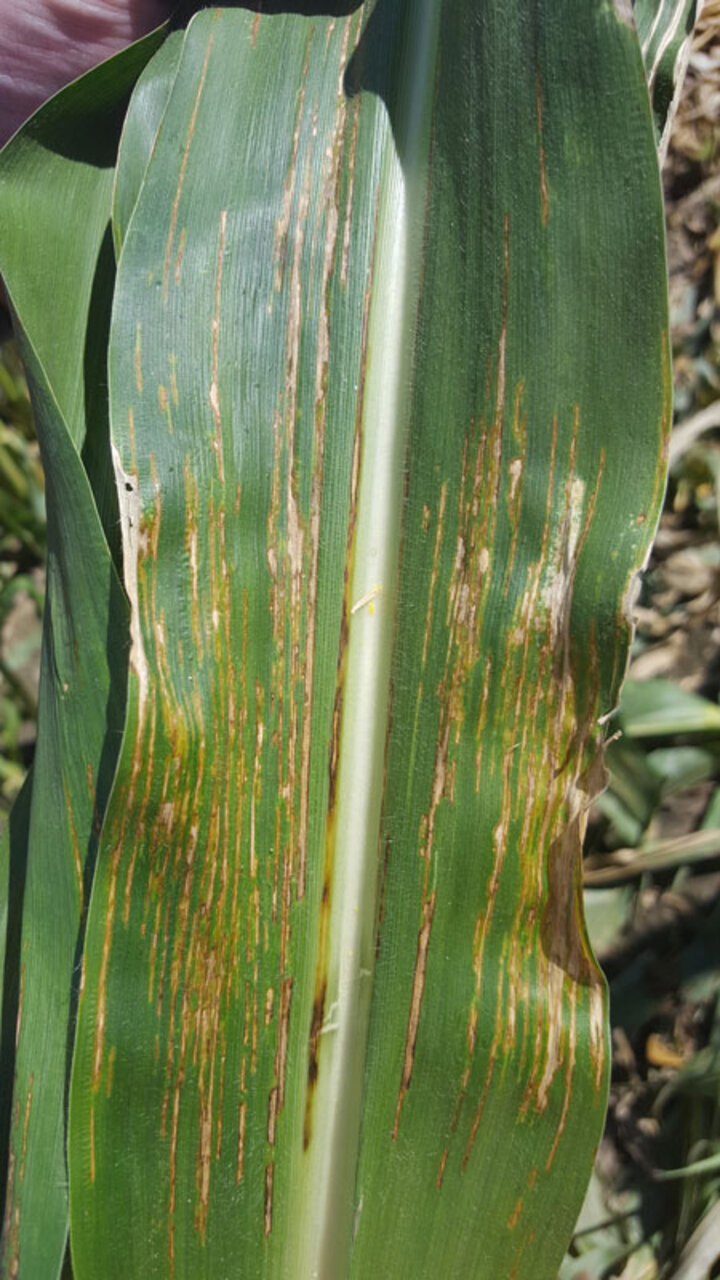
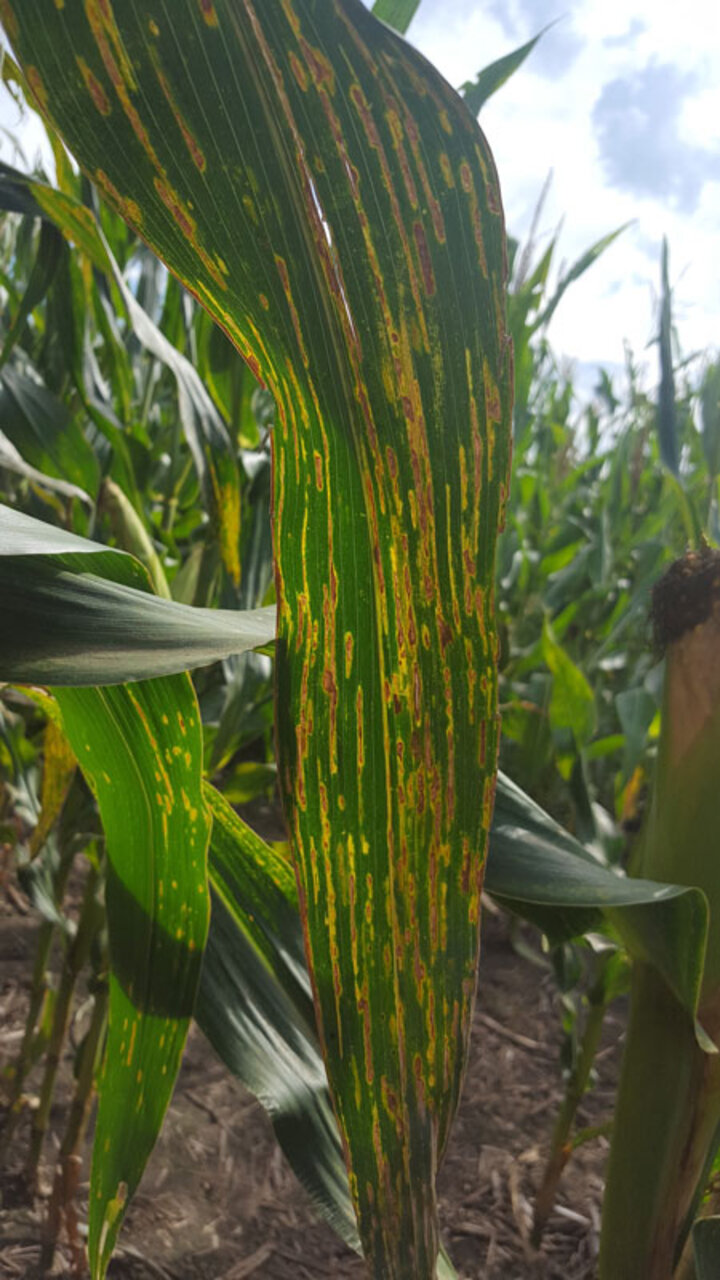
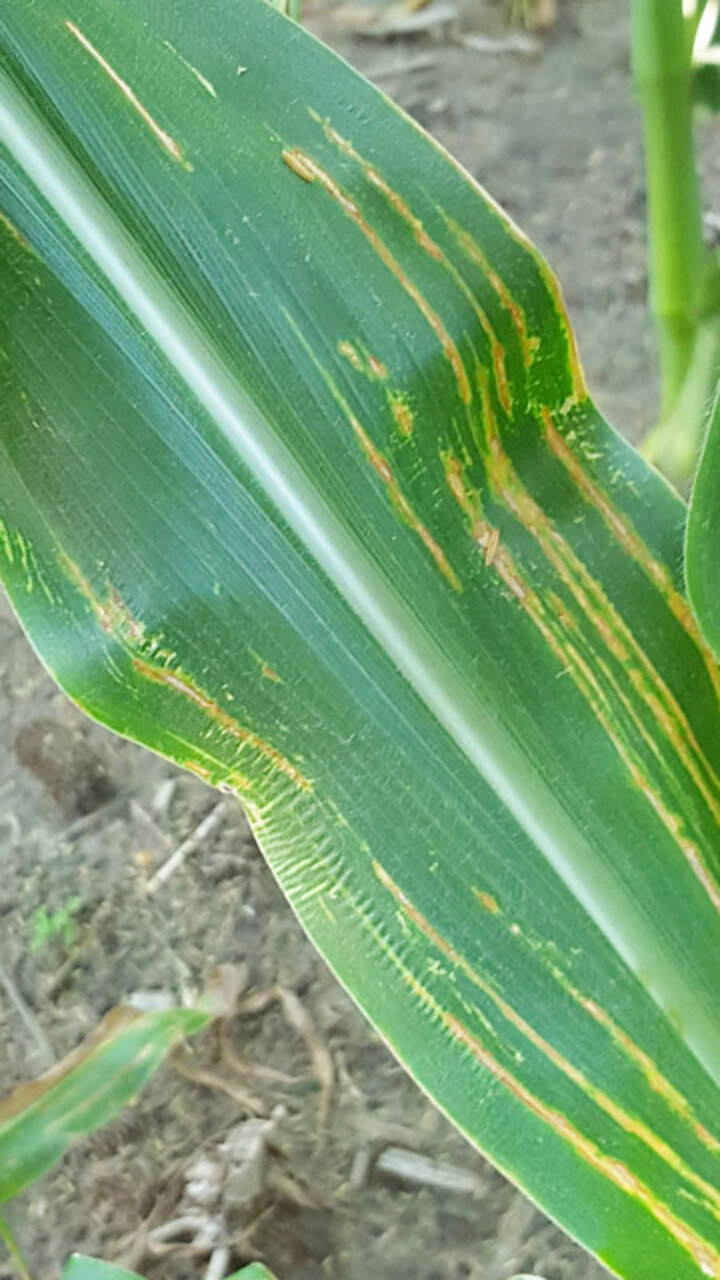
For more information:
- Crop Protection Network — Bacterial Leaf Streak
- Hartman, T. M. 2018. Investigation of Alternative Hosts and Agronomic Factors Affecting Xanthomonas vasicola pv. vasculorum, Causal Agent of Bacterial Leaf Streak of Corn. MS thesis, University of Nebraska.
- UNL CropWatch — Bacterial Leaf Streak
Stalk Rot Diseases
Crop stress during the 2019 growing season led to poor stalk quality in many 2019 cornfields. Stalk rot diseases were evident as early as August in some areas and worsened as we approached harvest. Corn in late planted fields may have been prone to develop thin stalks that set ears higher on the plants, putting them at greater risk for lodging. In addition, many fields had areas of ponding and experienced frequent rainfall, substantial leaf disease pressure, soil fertility challenges (especially nitrogen deficiency), and wounded plants due to hail, insects, or other factors that put them at risk for stalk rot diseases that compromised stalk quality. The most common stalk rot diseases that were observed in 2019 were anthracnose stalk rot, Fusarium stalk rot, and Gibberella stalk rot.
For more information:
- Stalk Quality Concerns Widespread in Areas of Nebraska. Cropwatch Newsletter Article, September 27, 2019.
- Crop Protection Network – Anthracnose Stalk Rot of Corn
- Crop Protection Network – Fusarium Stalk Rot of Corn
- Crop Protection Network – Gibberella Stalk Rot of Corn
Ear Rot Diseases
Ear rot diseases and grain quality concerns were common in 2019. Several factors impacted grain quality:
- Cool and wet conditions during late Summer and Fall months
- Development of ear rot diseases
- Slow grain drying conditions
- Delayed harvest
- Early frost prematurely killed plants prior to black layer
Numerous ear rot diseases were common and could lead to grain mold problems during storage. Cool and dry conditions will slow mold growth in storage. Severely affected should be stored for only a short time as mold is likely to continue to grow when/if conditions inside the bin are warm and damp.
For more information:
- Crop Protection Network – Diplodia Ear Rot of Corn
- Crop Protection Network – Fusarium Ear Rot of Corn
- Crop Protection Network – Gibberella Ear Rot of Corn
- Crop Protection Network – Trichoderma Ear Rot of Corn
Tar Spot
Tar spot of corn is likely to be confirmed in Nebraska in 2020. The disease has been confirmed in 9 U.S. states since 2015. In 2019 the pathogen moved west most of the way across Iowa toward Nebraska and has been confirmed within 1 county East of the Missouri River (Figure 10). Tar spot in the United States is caused by the fungus Phyllachora maydis. In Latin America where the disease is more common, tar spot may also be caused by a complex of P. maydis and the fungus Monographella maydis, which has not been confirmed in the United States. The disease can cause up to 50% yield loss when severe.

Symptoms of tar spot appear on upper and lower leaf surfaces and look like splattered tar or black paint on the leaf. The black “dots” are the fungal reproductive structures, called ascomata, that are raised above the leaf surface and contain hundreds of spores. Ascomata may appear on the leaves or the husks, or leaf sheaths (Figures 11-12). Ascomata may sometimes be surrounded by tan to brown lesion borders and are called “fisheye” lesions (Figure 12). These structures may be commonly confused with insect frass, but fungal ascomata can’t be rubbed off with the fingers. Tar spot ascomata may also be confused with the black teliospores that are produced by the common rust and southern rust fungi near the end of the growing season. However, teliospores may be rubbed off onto fingers and examination of pustules with a hand lens indicate that they were produced by erupting through the leaf surface instead of developing on it (Figure 13). And, ascomata are definitive structures and not the irregular ambiguous shapes that you may see caused by beneficial saprophytic fungi that commonly infect necrotic leaf tissue. Cool, wet conditions are most favorable for the disease, especially 60-72 F, which are optimal. Management of the disease is complicated because of how recently it has arrived in the United States and because the fungus is an obligate parasite, making it more difficult to inoculate and manipulate for experiments. Experiments are currently underway to screen for resistant hybrids and other management strategies. Foliar fungicides are likely to provide the most effective management of the disease, but application timing may be important for satisfactory control.
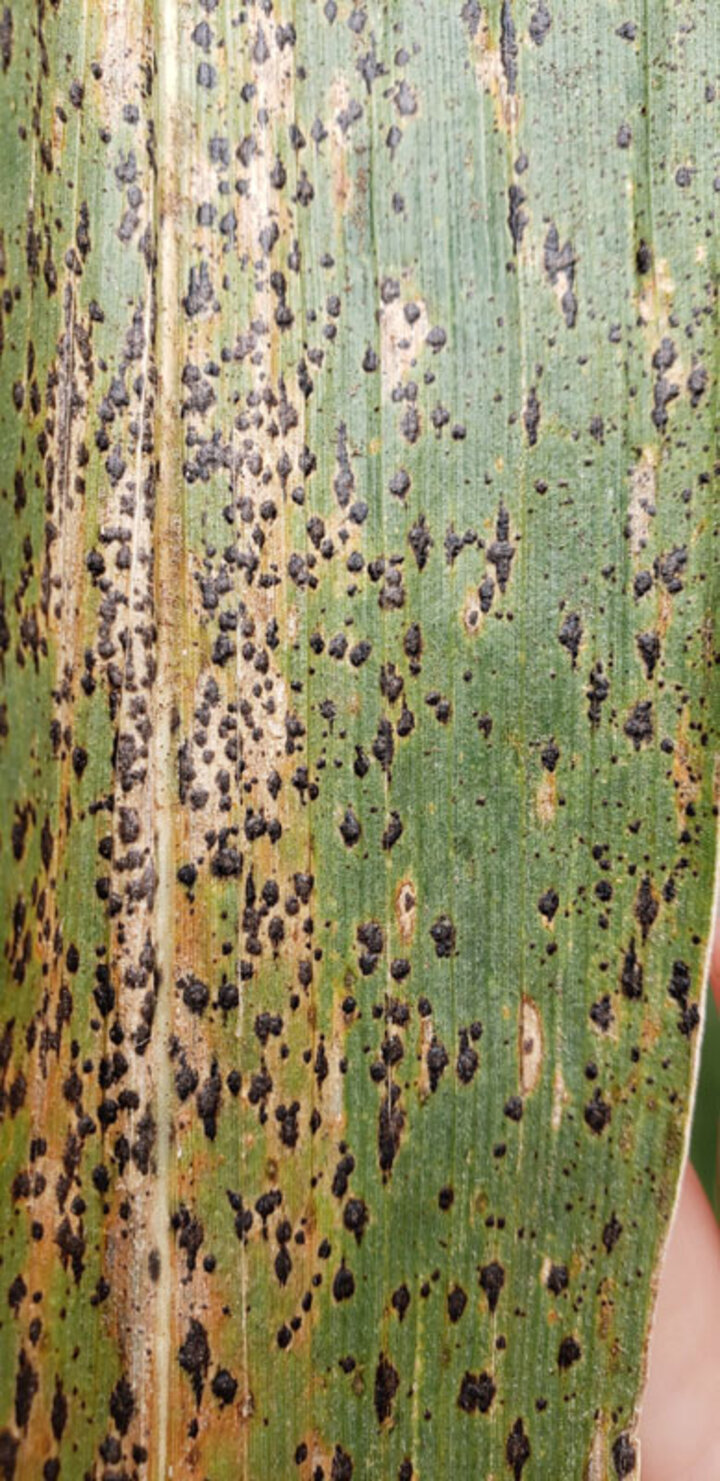


Identification of tar spot on a corn (or other grass host) sample and shading a county in Nebraska requires submission of a sample to the UNL Plant & Pest Diagnostic Clinic for confirmation. If you need help identifying a disease or think you may have found bacterial leaf streak in a county where it hasn’t been reported, please notify us and submit a sample to the UNL Plant and Pest Diagnostic Clinic http://go.unl.edu/plantclinic.
